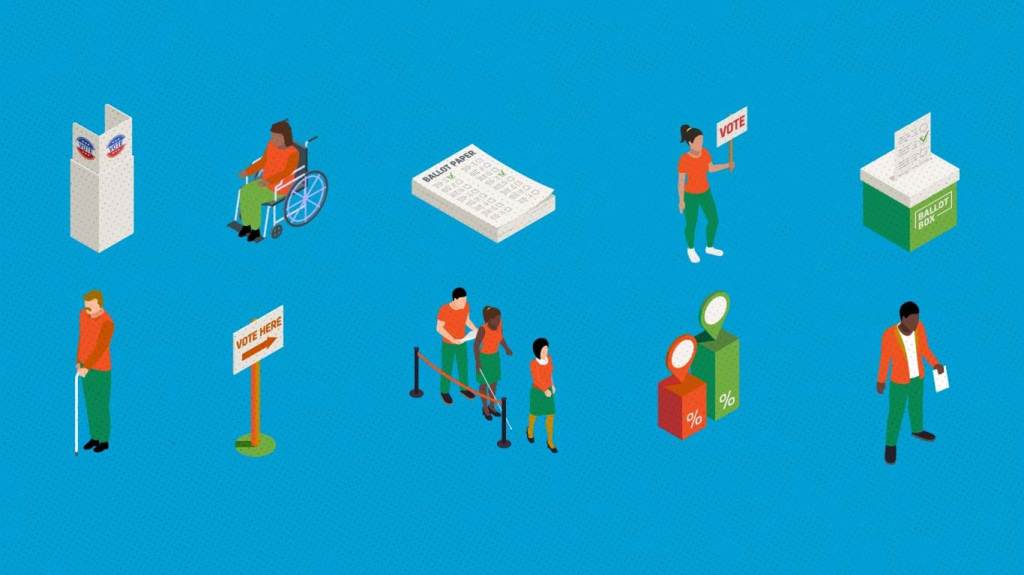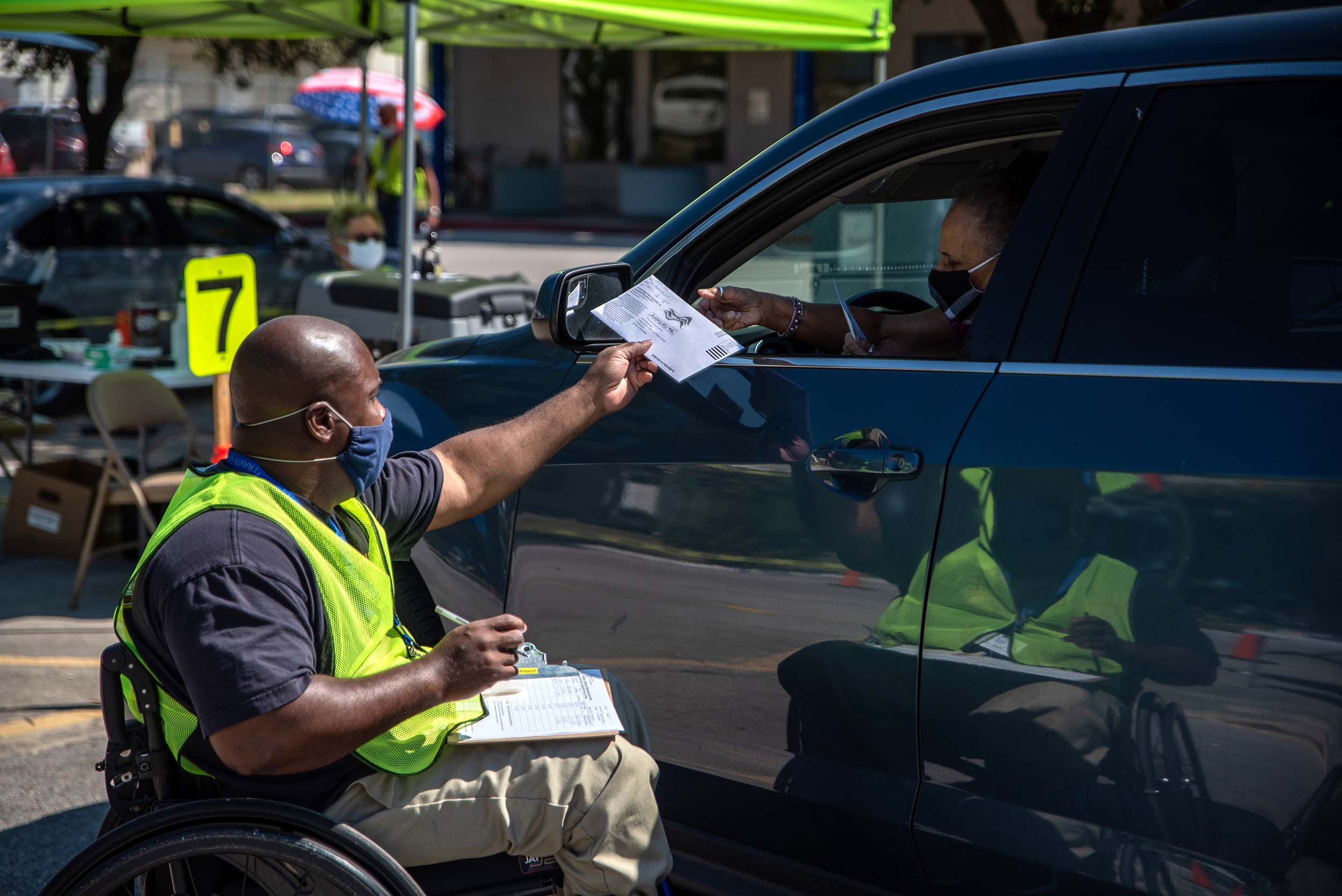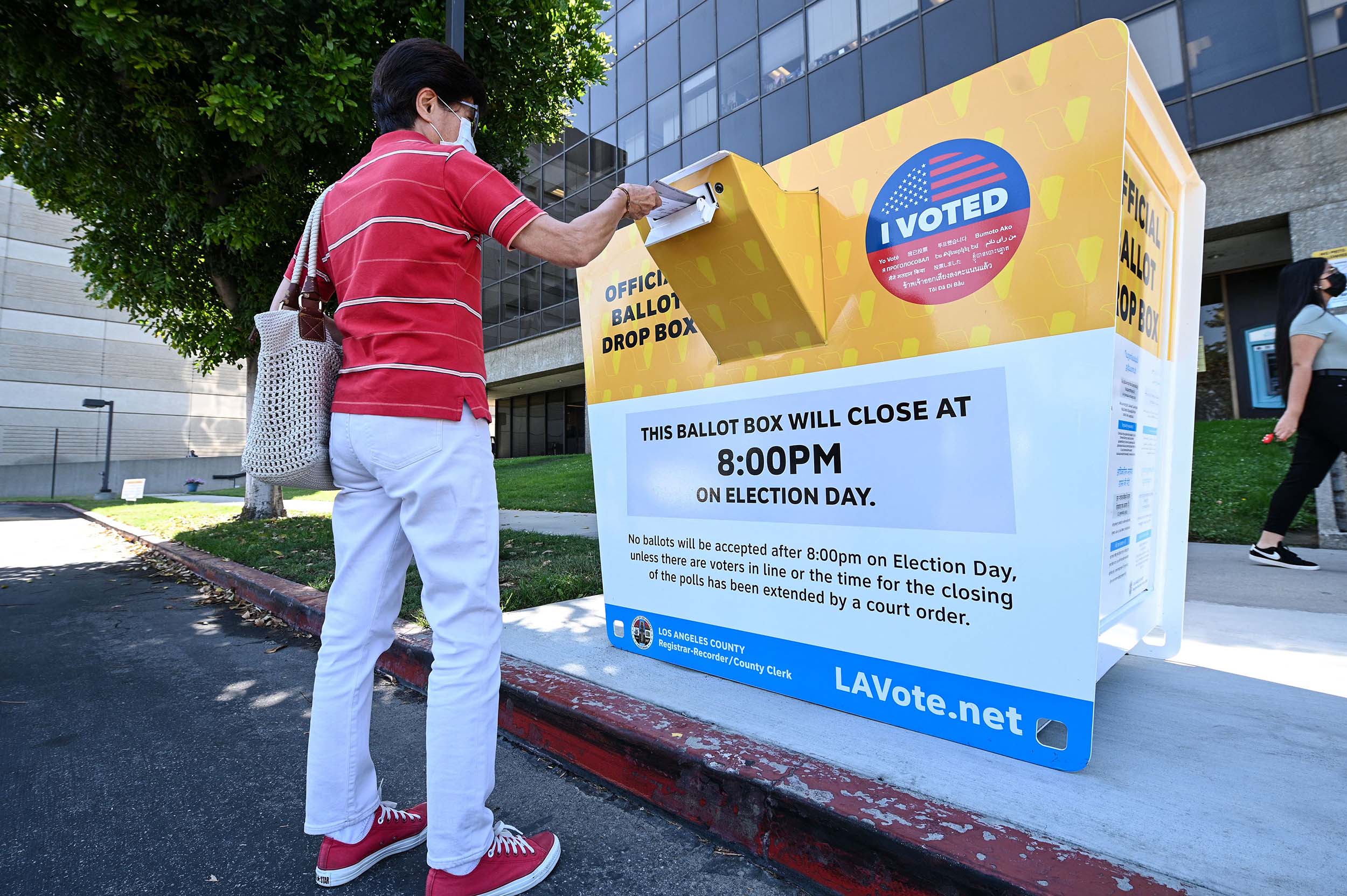
As American citizens gear up for midterms elections, there is one constituency needed at the polls: the disability community. In the U.S., one in five people have a disability and, after the outbreak of COVID-19, there are at least 10 million newly disabled people feeling the long-term effects of the virus. They are critical to helping determine the country’s future, not to mention a fair and equitable recovery from the pandemic.
Yet, for far too long, the disability community has been overlooked by politicians and often not recognized as a powerful ally in the fight for voting rights. Nearly 30 years after the Americans with Disabilities Act (ADA), 60% of polling places still have impediments that inhibit people with disabilities from accessing the polls. Furthermore, poll sites are less likely to be set up for wheelchair access or have headphones readily available, or even switched on for use, for audio-balloting.
And yet disabled voters have proven to be an unstoppable force of civic engagement and advocacy. In 2020, voters with disabilities turned out in droves in one of the most consequential elections in U.S. history, even amid significant challenges caused by the COVID-19 pandemic. According to a report from the Center for American Progress, nearly 62% of voters with disabilities cast a ballot in the November 2020 election, compared with just 56% in 2016.
In many ways the pandemic created new and important opportunities for people with disabilities to vote. A multitude of options—including early voting, same-day registration, drop boxes, mail-in voting, and more—opened the doors for disabled voters to participate in a way that accommodated their needs like never before.
 Sergio Flores/Bloomberg
Sergio Flores/BloombergThe 2020 U.S. presidential election created new opportunities for disabled voters to participate in ways that accommodated their needs—including drive-thru mail ballot delivery, mail-in voting, same-day registration, and drop boxes.
This high turnout shows voters with disabilities’ resolve to make their voices heard and to fully participate in American democracy. The coalitions formed during the 2020 elections that incorporated the intersectionality of voter identities also demonstrate a growing collaboration between voting rights and disability rights organizations, working together to ensure voters can participate regardless of race, class, geography and disability.
At Ford, we believe equality is a shared struggle and we need to recognize how disability interconnects with the issues of social justice—and that includes protecting a person’s right to vote and advancing democracy. For years, we’ve supported organizations on the frontlines and know that civic engagement is a potent antidote to inequality. We believe social justice movements are more impactful when they are inclusive and built on strong, collaborative partnerships. That’s why we believe that the voting rights movement will be all the more effective by not only integrating disability rights but bringing on disability rights advocates and activists to lead this work.
 Robyn Beck/AFP
Robyn Beck/AFPNearly 62% of voters with disabilities cast a ballot in the November 2020 election, compared with just 56% in 2016, according to a report from the Center for American Progress. By partnering with the voting rights movement, we believe the disability community can become a powerful force for advancing democracy.
In the past, there have been attempts of voter suppression that weaponized the ADA, forcing the closing of polling locations in communities of color who are already disproportionately impacted by polling place closures, voter ID laws, and laws that restrict absentee and Sunday voting. As recently as 2018, Randolph County in Georgia announced plans to close seven out of only nine polling places in a majority Black community just three months before the 2018 midterm elections day, citing non-ADA compliance. A 2019 report from the Leadership Conference on Civil and Human Rights found that officials commonly cited the ADA when closing polling places in communities of color throughout the South. Local and national advocates from both the voting rights and disability rights communities joined together to object to these closures, arguing that polling locations need to be compliant and accessible to all, not closed and accessible to no one.
To foster and strengthen these powerful collaborations, we have supported disability rights leaders to secure a seat and a voice in the broader civil rights movement, and encouraged voting rights and civil rights organizations to see the power of this integration. We have worked to make connections and build and deepen relationships, supporting groups such as the National Disability Rights Network and the Center for American Progress’s Disability Justice Initiative, which center multi-marginalized identities and increase collaboration between the disability community and democracy movement.
At the end of 2021, we also hosted Curb Cut to the Ballot Box, a dynamic convening that lifted up the power of this collaboration and explored how integration strengthens democracy for the future. The conversation, which included voting and disability rights leaders, examined the successes from 2020 and the challenges that still need to be tackled to ensure that all voters can cast their ballots freely and fairly. The most powerful voices in the room were those of voters with disabilities, sharing their own stories about the joys and frustrations of voting in 2020.
Accessibility Statement
- All videos produced by the Ford Foundation since 2020 include captions and downloadable transcripts. For videos where visuals require additional understanding, we offer audio-described versions.
- We are continuing to make videos produced prior to 2020 accessible.
- Videos from third-party sources (those not produced by the Ford Foundation) may not have captions, accessible transcripts, or audio descriptions.
- To improve accessibility beyond our site, we’ve created a free video accessibility WordPress plug-in.
Mimi Marziani, the president of the Texas Civil Rights Project, noted that all advocates have to be aware of who is missing from the tables and the perspectives those communities bring. She explained, “We all come to the work with our own lived experience. That’s why these coalitions are so important.” In 2020, she was encouraged by the growing movement she saw that was intersectional and involved people of color, people with disabilities, young people, and other groups excluded from the electorate working together to push back on restrictions and showing up at rallies and at election protection coalitions. She notes that coalitions are stronger when everyone has a seat at the table and an active voice. Nse Ufot, CEO of the New Georgia Project agreed, “We have missions and mandates that don’t always neatly overlap, but we’re figuring out how to work together. It’s getting easier and trust is being built. I feel really good about our future.”
Philanthropy can be a valuable partner to leaders and organizations building these relationships and coalitions, but foundations must be intentional about integrating disability rights into their programs and grantmaking. This includes supporting and partnering with disabled persons organizations, where disabled people constitute a majority of the staff, board, and volunteers. It includes funding voting and civil rights organizations with grants designed to to integrate disability rights into their work. And it includes playing an active role in fostering relationships, organizing convenings that connect disability and non-disability groups, funding inclusion training or technical assistance, and supporting collaborative grant projects.
Philanthropy can take further steps by increasing the number of disable people on staff, in leadership, and on the boards, and by establishing stronger inclusive policies and practices in the workplace. The Presidents’ Council on Disability Inclusion in Philanthropy’s Disability & Philanthropy Forum offers learning guides and resources from disability leaders and technical assistance providers who bring a range of expertise, from American Sign Language interpreters to strategies for more inclusive grantmaking. And we here at the Ford Foundation are eager to share our own experience and lessons with colleagues across philanthropy.
With the weight of the midterms and the looming 2024 presidential election, the time to strengthen ties is now. As Lilian Aluri from REV UP/American Association of People with Disabilities reminded us at the convening, “the disability community in America is not a distinct community—we are a part of and in every other community. We are also Asian and Black and LGBTQ+. There are a lot of opportunities to combine resources and experiences.”
